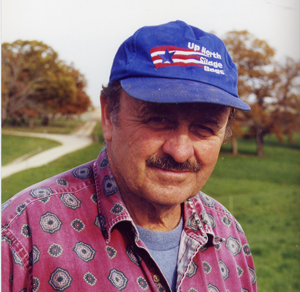Spring pasture management may be the most difficult task in farming. The weather is so variable that a management tactic based on calendar dates and specific strategies that worked last year may fail miserably this year. Grass availability can turn from shortage to surplus in the space of a few days, and it can rain on that surplus for days at a time. Mistakes and bad breaks in spring can haunt grass farmers through the rest of the year, with poor summer production and lots of poor hay in storage. Yet fortune and good strategies can you give your pastures a chance to be productive during dry summer weather, and give you the ability to supplement with the quality forage made in spring.
While everyone screws up spring grass management at least once in a while, the Opitz dairy farm in southwestern Wisconsin probably screws up a lot less than average. With more than 2,000 cattle on 3,000 acres of rolling and rough ground, Charles Opitz, his son Mark, and herdsman Keith Ekstrom have their hands full every spring. But they usually come out of it with pastures set up well for the summer season, and a fair amount of decent quality pasture haylage in a pit or wrapped in bales.
Graze recently talked with Charles Opitz about his spring pasture strategies, which include aggressive and flexible grazing and cutting management. A portion of that interview follows.
Graze: Charlie, would you put nitrogen on any pastures early in the spring?
Opitz: Probably if I had abused a pasture badly in the fall by grazing hard in September and on fields with low fertility. Those areas sometimes can use a little something to get them going.
Graze: When do you start grazing milk cows?
Opitz: It doesn’t do any good to send them out if it’s too wet, because they’ll just pound it. We wait ‘til it looks like there’s going to be a couple of nice, dry days coming, and the grass is two or three inches high. Then we just start rolling. We may let them graze for an hour or two in one place and then move them. Especially if it’s wet you’ve just got to keep moving. You don’t want them destroying the paddock, you don’t want them to keep nibbling the same blades of grass, and you want to start setting up your staggering so you’ve got different stages of growth.
Graze: But you don’t want to start too late either, right?
Opitz: If you turn out too late, you lose your stagger and you end up having to initiate a cutting program earlier than you would otherwise. You have to cut haylage at eight to 10 inches high, which isn’t much hay, but it’s necessary to get you back into the stagger.
Graze: So in this case, the mechanical harvest is a more expensive way of doing what the cows could have done?
Opitz: Yes.
Graze: But Charlie, at least in the more northerly areas there’s such a growth flush that a large percentage of pasture usually gets out of hand at some point, right?
Opitz: Yes, if it just flushes on you, you’ve got your hands full and it can be impossible to control. You can help things by pulling some grain away (from the cows). You can pull half of it away without hurting milk production from a spring-calving herd, and they eat a lot more grass. And you’ve got to step up your cutting program earlier.
Graze: How do you decide what and when to cut?
Opitz: If you’ve got more than two or three days ahead of you, then you might as well skip one (paddock). Then you’ll start skipping more than one.
Graze: So when do you start cutting?
Opitz: Usually we wait about seven days after we start dropping paddocks out of the rotation. If weather pushes us out to eight to 10 days, we just cut bigger areas. You know you’re starting too late when the bottom leaves start deteriorating. If you hay it too late, you really hurt yourself. The pasture tends to go into a summer dormancy. You know you’ve hit it early enough when you look out the next day, and it’s getting green again already.
Graze: But cutting early doesn’t usually work for dry hay and big acreages, does it?
Opitz: We have found it impossible to manage high quality, dense pastures without a baleage program. We cut baleage early on to stagger growth, and we cut later (after a custom operator takes off larger areas for Opitz’s silage pit) to control growth. The flexibility, the ability to do small acreages during the wet season, is important.
Graze: It’s virtually impossible to entirely prevent seed head formation though, isn’t it?
Opitz: You’re probably correct. But you’re inducing tillering. You create a denser sward if you cut it early and graze it early. You won’t control 100% (of seed heads), but you can try for 80%. And then you can do a lot to control that with a clean-up herd. You can feed a lot of animals while you’re getting your grass back under control, and you won’t have to clip. We clip more for weed control than seed head control.
Graze: So it sounds like you have several goals in the spring. One is to stagger grass growth to keep it under control as much as possible. A second is to harvest some decent-quality hay for the time and money you’re putting into it. A third is to have your pastures ready to face dry summer weather. And finally, you want to graze and hay in a way that thickens your swards. Sounds like good spring management is important.
Opitz: If you lose control of grass early in the season, you’ve just about blown it for the entire season.

